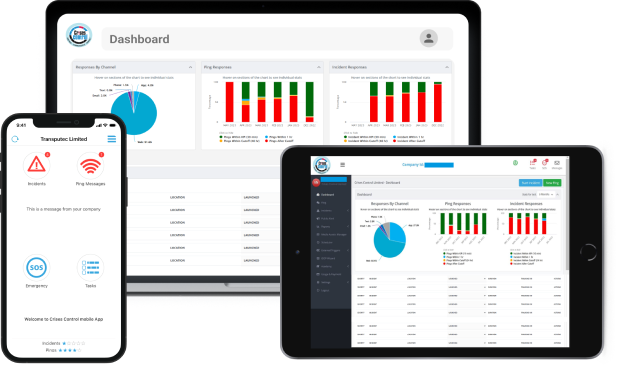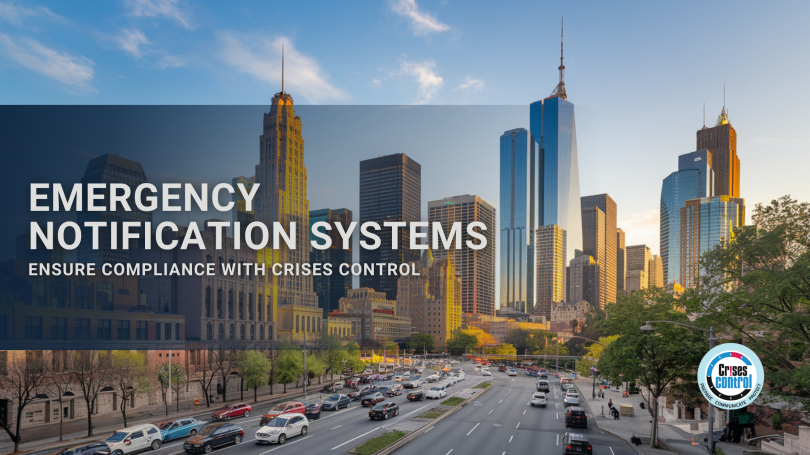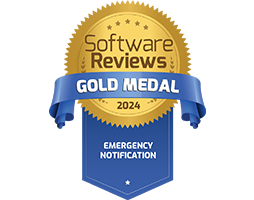Written by Anneri Fourie | Marketing Executive
Emergencies are unpredictable by nature, and in today’s fast-moving world, businesses must be ready for anything, whether it’s a natural disaster, a cyberattack, or an industrial accident. Having an Emergency Notification System in place is no longer optional—it’s a must for companies that want to stay compliant with industry regulations and, most importantly, keep their people safe. Whether you’re in healthcare, education, manufacturing, or any other sector, maintaining compliance with safety and legal regulations is crucial.
This blog explores how an Emergency Notification System helps businesses stay compliant and how Crises Control provides the tools you need to meet these requirements, all while enhancing your emergency response capabilities.
Why Compliance is More than a Legal Requirement
Compliance is not just about ticking boxes to avoid penalties. It’s about safeguarding your employees, ensuring the continuity of your operations, and protecting your company’s reputation. Each industry has its own set of regulations, which means businesses must understand and meet these rules to avoid serious consequences. Failing to comply with safety and communication standards can result in fines, loss of certification, or even, in extreme cases, business closure.
Here’s how compliance impacts different sectors:
- Healthcare: Regulations like HIPAA (Health Insurance Portability and Accountability Act) require secure and immediate communication during crises to protect patient data.
- Education: Schools and universities must follow the Clery Act, which mandates timely warnings for on-campus emergencies, from security threats to natural disasters.
- Manufacturing: Compliance with OSHA (Occupational Safety and Health Administration) standards is essential for keeping workers informed about hazards in real time.
Across all sectors, having a robust Emergency Notification System helps businesses streamline communication, ensuring timely responses that meet legal and safety obligations.
The Critical Role of Emergency Notification Systems in Compliance
An Emergency Notification System (ENS) is more than just a tool to send out alerts; it’s an integral part of your business’s compliance and safety strategy. During emergencies, these systems ensure that communication is swift, clear, and aligned with regulatory requirements. Let’s break down how an advanced solution like Crises Control can keep you compliant:
1. Real-time Alerts Ensure Immediate Action
Regulatory bodies often require immediate communication in emergencies. Delays in notifying employees, customers, or stakeholders can not only endanger lives, but also result in serious compliance breaches. An ENS sends real-time alerts through multiple channels like SMS, email, push notifications, and voice messages, making sure that no one is left in the dark when it matters most.
For instance, during a hazardous chemical spill in a factory, timely alerts can help workers take immediate safety precautions, preventing injuries and ensuring compliance with OSHA standards.
2. Automation Prevents Human Error
Emergencies demand speed, but human error can cause delays. That’s where automation comes in. A good ENS, like Crises Control’s Ping Mass Notification tool, ensures that alerts are automatically sent out to the right people without needing manual intervention. This saves valuable time and prevents mistakes that could lead to non-compliance.
Imagine a hospital dealing with an IT system failure. Automated alerts could instantly notify key personnel to switch to backup systems, ensuring patient safety and maintaining HIPAA compliance.
3. Two-Way Communication Keeps Everyone Informed
For many industries, compliance isn’t just about sending alerts—it’s about knowing how employees are responding to a crisis. Two-way communication allows management to check in on their teams and receive updates on their status. This capability is especially important in high-risk industries like manufacturing and healthcare, where managers need to quickly assess the situation and take appropriate action.
For example, after an earthquake, a university may need to verify that all staff and students are safe before implementing further safety protocols. Two-way communication helps them do this efficiently, keeping them compliant with the Clery Act.
4. Detailed Audit Trails for Compliance Reporting
Regulatory audits are part and parcel of compliance, and businesses must provide accurate records of how they responded during an emergency. Crises Control helps you maintain a detailed audit trail of all communications, responses, and actions taken during a crisis. This ensures that you can prove your compliance when the regulators come knocking.
Whether it’s for a government investigation or internal review, having a comprehensive audit trail can protect your business from penalties and ensure you’re always prepared for audits.
Interested in our Ping Mass Notification Software?
Efficiently alert everyone in seconds at scale with our Mass Notification System – PING, get the message out fast and ensure rapid response and recovery.
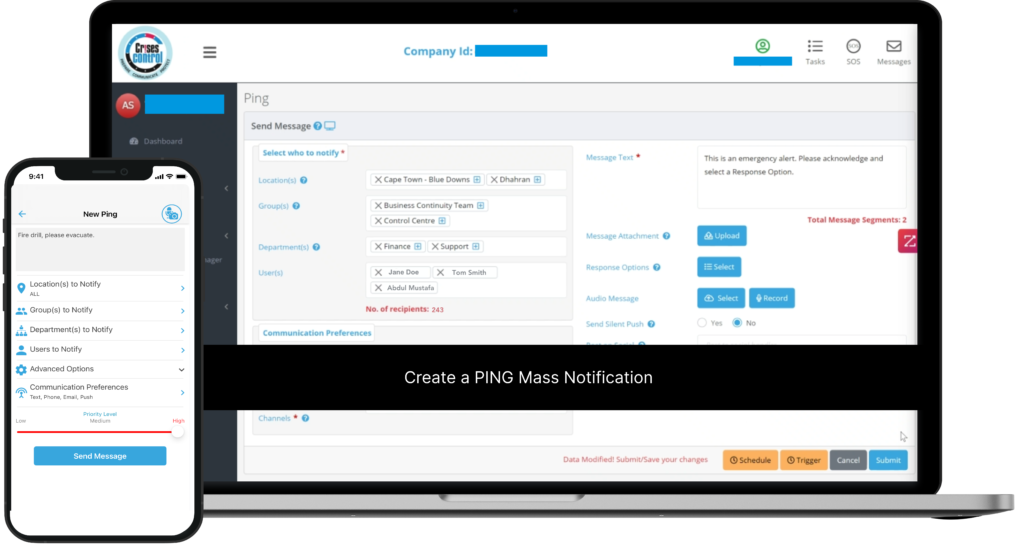
How Crises Control Keeps Your Business Compliant
Crises Control offers a wide range of tools that not only help businesses manage crises, but also ensure compliance with various regulatory standards. Let’s explore how each feature is designed to meet specific compliance needs.
1. Ping Mass Notification for Immediate Alerts
Crises Control’s Ping Mass Notification ensures that every employee receives immediate crisis alerts, regardless of their location. This multi-channel communication feature helps businesses meet compliance standards that require quick, reliable dissemination of information across different platforms. Whether you’re dealing with a security threat at a university or a chemical leak at a manufacturing plant, real-time alerts help protect both people and assets.
2. Incident Management for Coordinated Responses
Regulatory standards often require that businesses not only report incidents, but also coordinate responses effectively. Crises Control’s Incident Manager tool allows you to manage these responses across multiple teams, track the progress of the incident, and ensure compliance with post-incident reporting requirements.
For instance, if a healthcare facility faces a power outage, the Incident Management tool can help ensure that generators are activated and that medical devices continue running, maintaining compliance with healthcare regulations like HIPAA.
3. Secure Communication for Compliance
For businesses that handle sensitive data, such as those in healthcare and finance, secure communication during crises is essential. Crises Control’s platform is built with advanced security features, ensuring that personal and confidential information is protected, even during emergencies. This allows businesses to comply with data protection regulations like GDPR and HIPAA while focusing on the crisis at hand.
4. Task Manager for Compliance-Based Actions
Sometimes, compliance requires more than just communication; it involves executing specific tasks during emergencies. With Task Manager, Crises Control allows businesses to assign and track tasks in real-time, ensuring nothing is overlooked. Whether it’s ensuring evacuation protocols are followed or shutting down equipment in a factory, Task Manager ensures that all compliance actions are completed efficiently.
5. SOS Panic Button for Immediate Assistance
In high-risk industries, such as manufacturing or healthcare, the ability to act quickly can save lives. The SOS Panic Button allows employees to trigger immediate alerts during emergencies. This feature is particularly useful in meeting compliance standards where rapid notification of key personnel is critical, such as in medical emergencies or industrial accidents.
6. Pre-Configured Alerts for Industry-Specific Needs
Different industries have unique compliance requirements, and Crises Control’s platform allows businesses to create pre-configured alerts tailored to these specific needs. For example, educational institutions can have pre-set alerts for lockdowns, while healthcare facilities can set up templates for patient evacuation.
7. Incident Reporting and Audit for Full Transparency
Comprehensive reporting is a cornerstone of regulatory compliance. Crises Control’s Incident Reporting and Audit tool ensures that every action, communication, and response during a crisis is documented. This helps businesses meet compliance requirements for incident reporting and ensures full transparency during post-crisis audits.
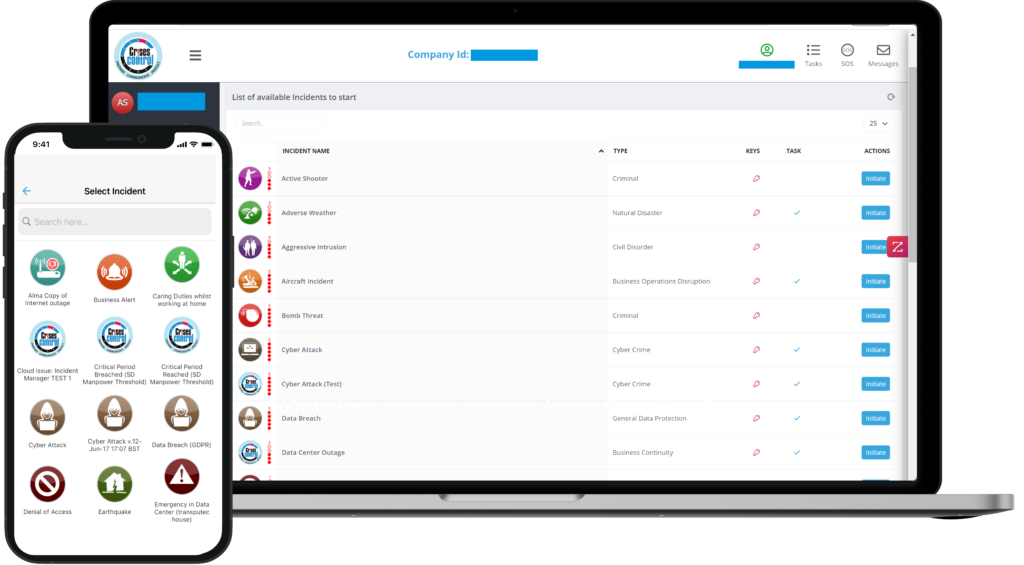
Interested in our Incident Management Software?
Customise your Crisis Incident Management Software to meet your specific needs with our flexible tools & stay connected and informed during the crisis and incident management process
Conclusion: Stay Compliant and Protect Your Business with Crises Control
Compliance is about more than following rules. It’s about protecting your employees, safeguarding your assets, and ensuring your business can continue to operate during and after a crisis.
With Crises Control’s advanced features, including Ping Mass Notification, Incident Management, Task Manager, and Incident Reporting and Audit, your business can confidently meet compliance standards while improving your ability to respond to emergencies. Whether you’re in healthcare, education, manufacturing, or another industry with strict compliance needs, Crises Control provides the tools to keep your workforce safe and your business compliant.
Don’t leave compliance to chance. Protect your business and your people by implementing Crises Control’s Emergency Notification System. Get a free personalised demo today and discover how Crises Control can help you stay compliant while responding swiftly and effectively to any emergency.
Request a FREE Demo
